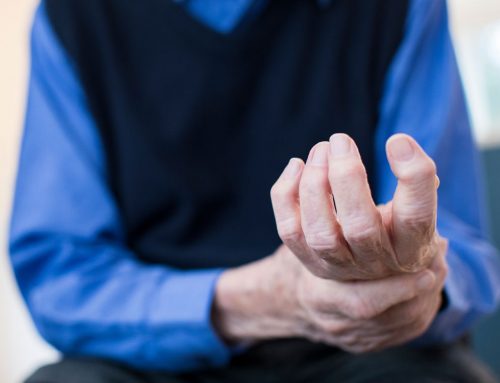Can thermotherapy help high blood pressure? It may:
- Saunas seem to reduce the risk of developing hypertension. In a study of 1600 Finnish men, followed on average for 24 years, after adjusting for other risk factors, those who used the sauna 2-3 times a week had 17% less risk of developing hypertension than those who used the sauna once a week or less. For men who used the sauna 4-7 times a week, the risk of developing hypertension was 47% less than the men using it once a week or less.1
- The team that did the study above tested the results by having 102 people take a sauna then measure the effects on their cardiovascular system. All the people had previous risk factors for heart disease (14 had hypertension) but didn’t have any symptoms. Even with only one session, they found that their arteries were not as stiff (decreased arterial compliance) which may have caused the reduction in both systolic and diastolic blood pressure which stayed down for at least 30 minutes after treatment. Importantly they found that the sauna was safe for these people, who were mainly regular sauna users.2
- In a study of 16 patients with low-level hypertension, sauna alone did not have any lasting effect on blood pressure but an exercise session followed by sauna reduced both systolic and diastolic blood pressure for up to 24 hours. The treatment was performed safely on all participants who were not regular sauna users.
- When 45 sedentary and obese young men, who had only rarely used a sauna, were given one extended sauna session, their average blood pressure increased to low-level hypertension. The more obese individuals had the biggest increase.3 In a similar setup but with both wet and dry saunas, 10 healthy young men who were inactive and infrequent sauna users, had increases of systolic blood pressure but decreased diastolic pressure.4
- Two studies from Germany indicate that regular saunas may have long term benefits. After three months of twice-weekly saunas, 180 participants’ average blood pressure had fallen from 162/110 mmHg to 139/92.5 These improvements were detectable for up to three years afterwards.6
What do the studies show?
There are many more studies I could put in here, in some the blood pressure decreased, stayed the same or increased. The studies I mentioned above illustrate this and also show that it may be associated with other healthy practices. It seems that blood pressure decreases for regular sauna users, those who exercise and have lower body weight.
From my personal experience with lifestyle change programs, hypertension improves within weeks of making a change to a better diet. I suspect that regular saunas will enhance the hypertension-lowering effects of lifestyle change, but only have minor effects without increased activity levels and improved diet.
Why does Thermotherapy reduce Blood Pressure?
An obvious reason is that fluid loss, through sweat, reduces blood volume and blood pressure, but this doesn’t explain the lasting effects. As mentioned above, arterial compliance improves allowing better blood flow may be a cause.2 For me, the improvement in the endothelium, the lining of the blood vessels is the most probable.7
Another suggestion is the reduction in stress levels from having a sauna may reduce blood pressure.7
Talk to your Doctor
You will need to check with your GP about the contraindications to thermotherapy (conditions that are a reason to avoid thermotherapy). There are only a few contraindications but some relate directly to heart conditions. We also want to check that any lifestyle change we suggest won’t cause you health problems.
So can thermotherapy help reduce your blood pressure? There are studies that suggest it can.
Let’s see.
References
- Zaccardi F, Laukkanen T, Willeit P, Kunutsor SK, Kauhanen J, Laukkanen JA. Sauna Bathing and Incident Hypertension: A Prospective Cohort Study. Am J Hypertens. 2017;30(11):1120-1125.
- Laukkanen T, Kunutsor SK, Zaccardi F, et al. Acute effects of sauna bathing on cardiovascular function. J Hum Hypertens. 2018;32(2):129-138.
- Podstawski R, Borysławski K, Clark CCT, Choszcz D, Finn KJ, Gronek P. Correlations between Repeated Use of Dry Sauna for 4 x 10 Minutes, Physiological Parameters, Anthropometric Features, and Body Composition in Young Sedentary and Overweight Men: Health Implications. Biomed Res Int. 2019;2019:7535140.
- Pilch W, Szyguła Z, Palka T, et al. Comparison of physiological reactions and physiological strain in healthy men under heat stress in dry and steam heat saunas. Biology of Sport. 2014;31(2):145-149. doi:10.5604/20831862.1099045
- Winterfeld HJ, Siewert H, Strangfeld D, Bohm J, Aurisch R, Engelmann U, Frenzel R. Die Saunatherapie bei koronarer Herzkrankheit mit Hypertonie nach Bypassoperation, bei Herzwand-Aneurysma-Operation und bei essentieller Hypertonie [Sauna therapy in coronary heart disease with hypertension after bypass operation, in heart aneurysm operation and in essential hypertension]. Z Gesamte Inn Med. 1993 May;48(5):247-50. German. PMID: 8517068.
- Winterfeld HJ, Siewert H, Strangfeld D, Warnke H, Kruse J, Engelmann U. Möglichkeiten des Einsatzes der Sauna in der Langzeitbehandlung von hypertonen Herz-Kreislauf-Regulationsstörungen–ein Vergleich zur Kinesiotherapie [Potential use of the sauna in the long-term treatment of hypertensive cardiovascular circulation disorders–a comparison with kinesiotherapy]. Schweiz Rundsch Med Prax. 1992 Aug 25;81(35):1016-20. German. PMID: 1410979.
- Laukkanen JA, Laukkanen T, Kunutsor SK. Cardiovascular and Other Health Benefits of Sauna Bathing: A Review of the Evidence. Mayo Clinic Proceedings. 2018;93(8):1111-1121. doi:10.1016/j.mayocp.2018.04.008
 AUTHOR
AUTHOR
BRUCE THOMPSON
BAppSc-Physiotherapy, Sydney University 1978
Bruce Thompson is a qualified Physiotherapist who has been using and teaching hydrotherapy for over 30 years.
See also:
traditionalhydrotherapy.com
hydro4covid.com





Leave A Comment